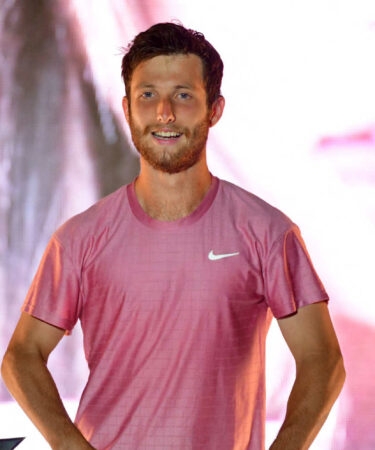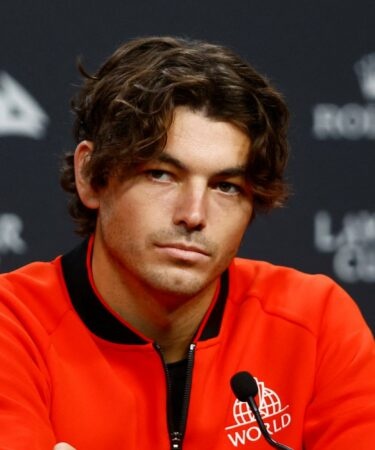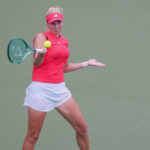“The first point is a match point”: how UTS changes the whole mindset of the tennis player
UTS4 brought in even more radical rules than the previous editions and crowned Corentin Moutet, in keeping with a style that is out of step with the ATP circuit. This raises questions about the profound changes that tennis would undergo if the UTS were to impose itself as the main format on the circuit in the long term
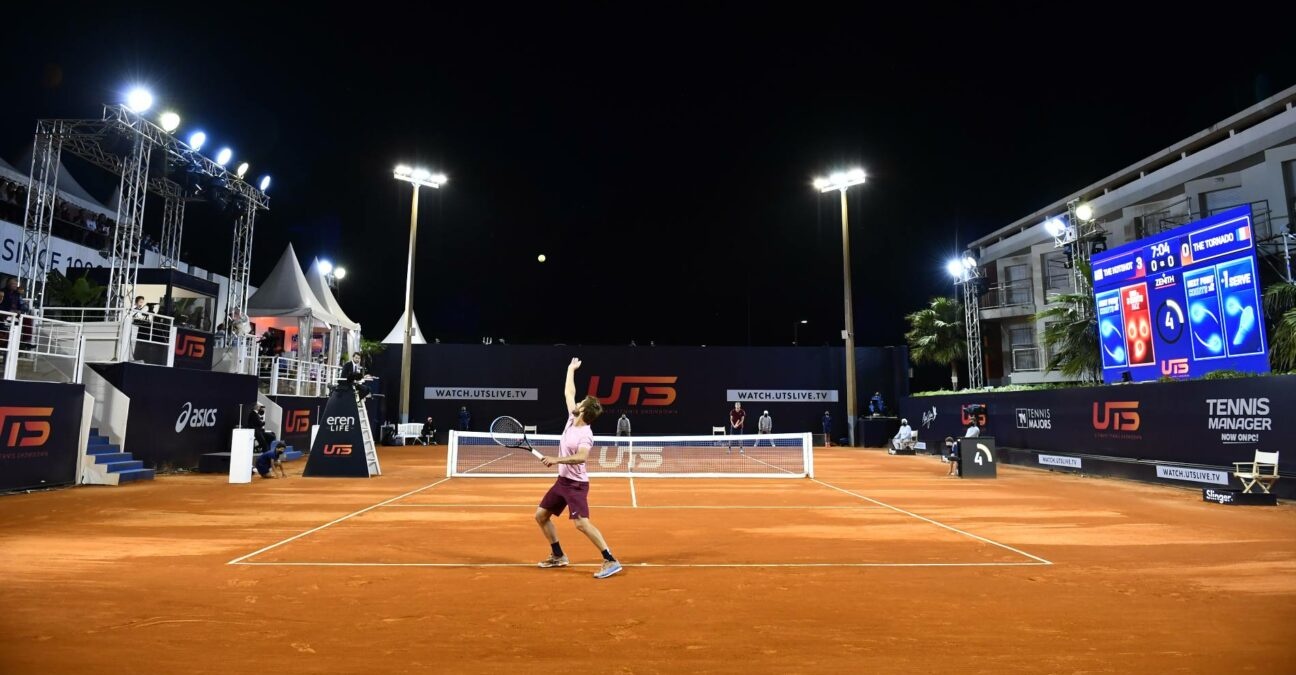 Corentin Moutet vs Taylor Fritz, UTS4 final
Corentin Moutet vs Taylor Fritz, UTS4 final
There couldn’t be better publicity for the Ultimate Tennis Showdown than Corentin Moutet‘s victory in its fourth edition. Patrick Mouratoglou had promised a revolution, and it was one. The Frenchman has never won a tournament on the ATP Tour and was the lowest ranked of the eight participants this week (72nd in the world on Monday). But the UTS format has opened a gap in which Moutet, winner of all five of his matches this week, has happily stepped into.
“I think it’s a great format for me, it pushes me to be a better player,” said The Tornado after his win, speaking to UTS commentators Jenny Drummond and Max Whittle.
The reversal of the balance of power raises questions about what tennis would be like if UTS were to become the premier format. The game of tennis would remain the same, but with a completely redesigned product offered to the fans, and the elements that need to be put in place to shine as well.
BIG SERVERS STRIPPED OF THEIR BEST ASSET AND FORCED TO ADAPT
This was already the case for the first three editions of the UTS, and it was even more so for this fourth one, with the introduction of an innovation that upset the balance: only one serve allowed per point, instead of the two that have been immutable in the rules of tennis since 1877. More than 140 years of history cannot be erased with a single stroke of the racket, and the big hitters who have swarmed the circuit since the sport took on a new physical dimension found themselves stripped of their best asset.
“You take away the serve from me, Medvedev or Bublik, it makes things a lot tougher for us,” said Taylor Fritz. “The guys who are performing here at UTS4 have a good second serve and are good returners. It’s good for them not to have to return these big first serves that we rely on. “
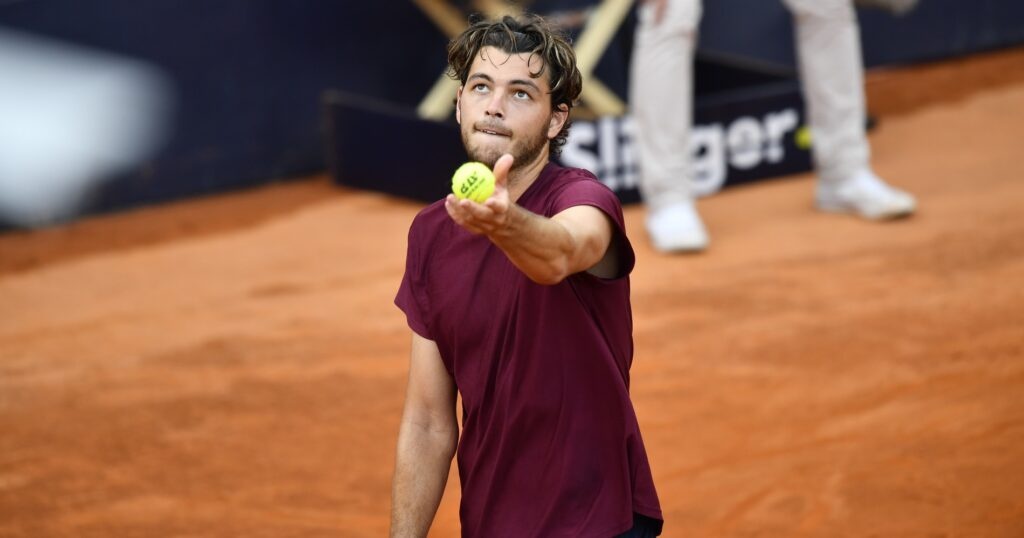
The beaten finalist at UTS4, Fritz adapted over the course of the matches by shifting his aggression from his first serve, as he explained to us. This offensive gamble in the rally has regularly allowed him to make the most of his UTS cards.
“The use of the cards leads to be more offensive, to be more aggressive in the game,” analyses Laurent Reymond, Corentin Moutet’s coach. “It’s audacity. You have to be daring at UTS. “
It is thus a whole model that the players must rethink.
“We have no tactic without serve,” admitted Alexander Bublik. “My whole game, when we’re talking about getting ready for our opponents, there is no way I’m not serving. The first my coach says to me is: ‘Today you serve like this and then next day you serve like this.’ Everything in my game is in 2-3 shots. Now he doesn’t know what to say, because basically I loop the second serve and we start the rally…One serve, it doesn’t give you an advantage in long rally and I’m getting tired because I’m not used to it.”
The physical aspect changes dramatically between matches on the ATP circuit that can last more than two hours, and potentially longer in Grand Slams, and UTS matches that will last no more than 32 minutes of playing time, excluding possible sudden death.
We’re not in it for the long haul
Laurent Raymond
UTS is not less energy consuming, it’s just a different kind of effort.
“There is less recovery between points, and the rotation is done every eight minutes, which is often more than what can happen in two games,” says Laurent Raymond. “You have to be prepared to put in more intensity, with more violent efforts. We’re not in it for the long haul, we’re in a short sequence of about 45 minutes where the physical and psychological effort is intense. “
It is a paradigm shift from a sport that has become over the years a test of athletic strength as much as a technical duel.
“We’re moving away from the pathway we’re trying to develop: endurance in explosiveness. There is a notion of explosiveness here, but the cardio dimension is important,” says Laurent Raymond. “You have to remain very lucid with regard to this format, otherwise you can quickly lose your footing and spin. You have to keep coherent on the court to process all the information, including observing what is happening in front of your opponent and being more cunning than he is in using the cards. “
Sent into the arena on Tuesday as a replacement for Grigor Dimitrov, Nicolas Mahut was swept away by the hellish pace imposed by the format, between the 15 seconds allowed between each serve, compared to 25 on the ATP circuit, and the host of parameters to be analysed in an ultra-fast time.
“I was quickly in a panic,” conceded Le Mousquetaire, still marked by the intensity of the effort in the aftermath of his straightforward defeat in three quarters against a Bublik who had the advantage of already having two UTS matches under his belt. I was very surprised, caught off guard all the time. It wasn’t that intense physically, but it goes very fast in the head. Usually I need to think a bit, to settle down, to think about what I’m going to do. I can’t tell you the score of the match because I didn’t have time to think. I feel like I was in stasis for three times eight minutes. “
LESS DOWN TIME, IMPORTANT POINTS UP FRONT…
UTS is an exercise in ultimate concentration. Because there are no longer any quiet moments that are sometimes seen in the classic tennis format, the first few points of the match are all the more crucial, between the absence of a warm-up on the court and the importance of getting off to a good start to set a positive dynamic.
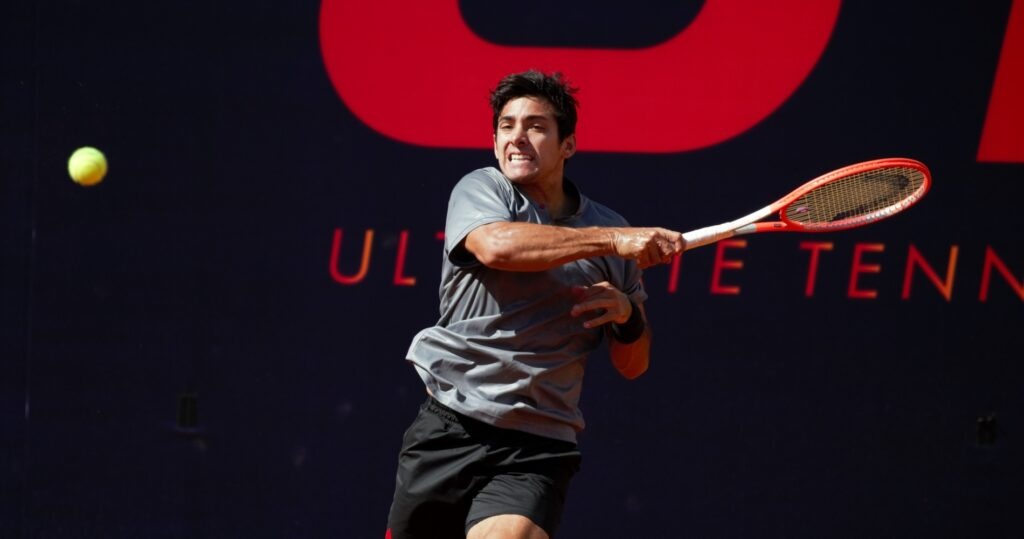
“You have to sweat when you go on the court. You have to be ready, like you already played 30 or 40 minutes, because it’s a really short match and you can’t give too many points at the beginning,” said Pierre Debrosse, who was Cristian Garin’s coach for the duration of the UTS.
“The first point is a match point, there is no observation round,” says Laurent Raymond.
Once the clock starts, you have to remain as cool as possible in your analysis of each situation. The format rewards the players who are best connected to their emotions and best prepared to handle them.
“It allows you to push the limits, because you have to remain lucid and process information very quickly,” says Laurent Raymond. “We can quickly lose our footing – if we are absent for two or three points, we don’t come back for a quarter. “
Moutet, who practised pranayama (the breathing technique associated with yoga) during breaks in the first two UTS, is one of the players who have already integrated this aspect into their preparation. Hence his ease of flourishing in the UTS format.
The same goes for the total freedom given to players by Mouratoglou, who dismisses the code of conduct imposed on the ATP circuit out of hand to set a much more flexible framework. Players like Moutet are never better than when they don’t feel restricted in expressing what is deep inside them.
“I love this feeling, to be free on the court,” Moutet admits. “We were human, we were authentic and I think that’s really important.”
“That’s why this competition exists, so that there are characters and characters that express themselves,” Mahut said.
For the time being, the gamble is proving successful: the players are seen in their entirety, with their strengths and weaknesses, their moments of fragility. Interviews in the middle of a match are one of them, especially after a lost quarter. For Laurent Raymond, imagining the players being grilled three times a game, in front of their opponents and a packed stadium, would be the UTS aspect that could cause the most reticence among the top players.
“That’s what could upset a player the most, because the game didn’t bring that before. It was an ‘off’ moment, where the player was trying to recharge and was alone. Interviewing him, that’s the thing that could be the coolest thing for the show, but the most difficult for the player.”
PUTTING YOURSELF FORWARD IS NOT YET NATURAL FOR COACHES
Another potentially disturbing factor for the player is the constant interaction with his coach. Invited to sit on the bench, as in team matches, with the difference at UTS being that he is equipped with a microphone permanently open, the coach is encouraged by Patrick Mouratoglou to take a central place in the course of the matches. But making the switch between the role they have historically played in the shadows and greater exposure is not so simple. Over the two days of UTS4, few player-coach interactions really stood out.
“Our job is not to be present during the match,” judged Laurent Raymond before the beginning of the competition. He was absent for both days of UTS. “I’ve been doing this for thirty years.”
But some coaches still found a way to give their player something extra. Some were vocal, encouraging with their voice and gestures. Others were assessing the best strategy to maximise the use of the cards.
“Cristian was asking to me about the cards.,” says Pierre Debrosse. “He was focused on the game. That’s an important role of the coach, to think for him about the cards, so he can be focused at 100% about his tennis.”
In the end, at UTS even more than on the traditional circuits, it’s all about tennis – but tennis with new codes, with the ambition to regenerate the sport and renew the fan base by reshuffling the cards…on the court and for the sport in general.



